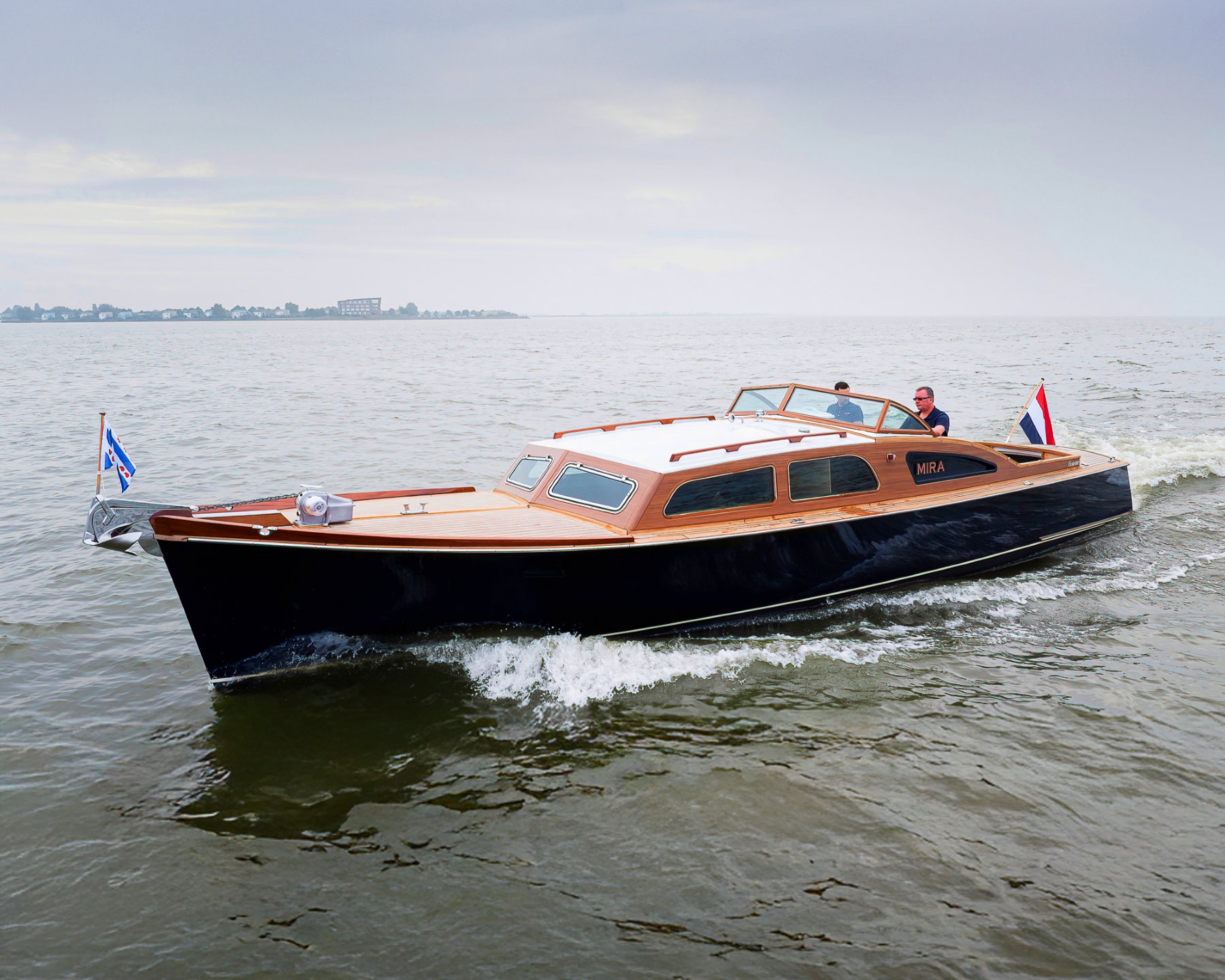Upgrading to a Lithium Battery in Your Camper: Tips & Step-by-Step Guide
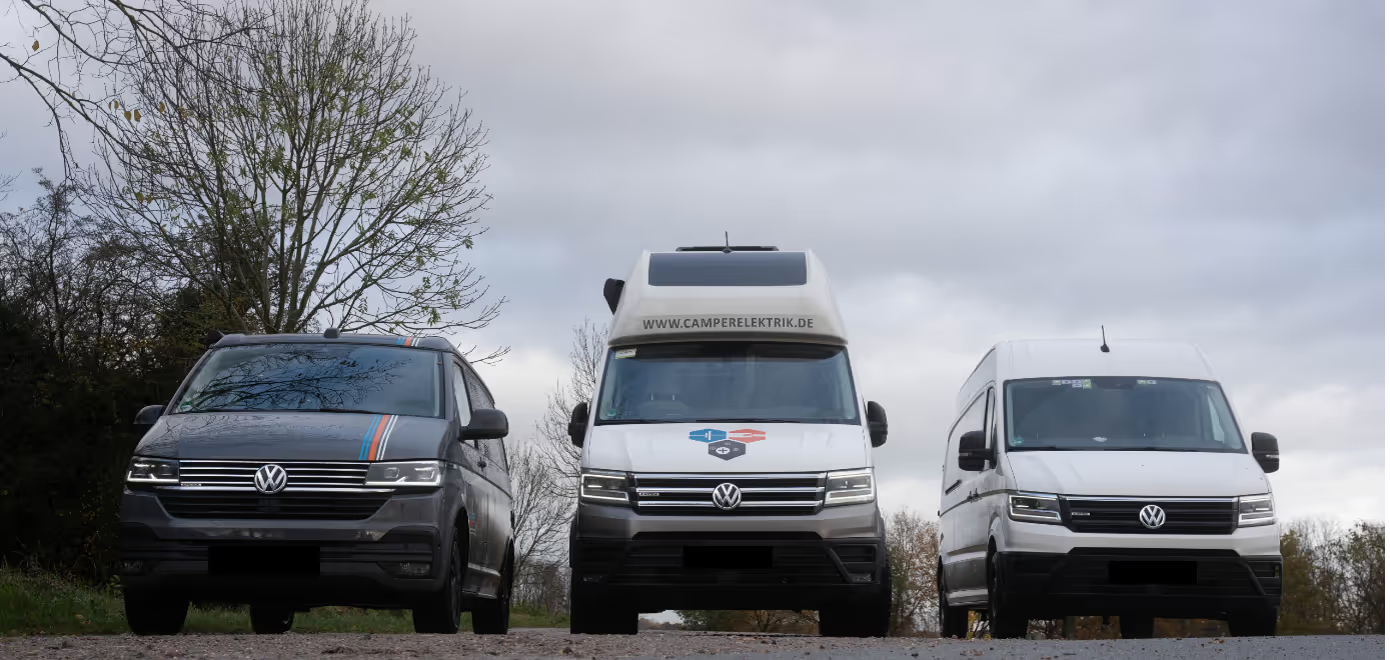
Your camper’s electrical system is its beating heart, and your battery determines how much freedom and comfort you can enjoy on the road. More and more van life enthusiasts are switching to lithium camper batteries (LiFePO₄),and for good reason: they’re lighter, charge faster, offer more usable capacity, and last significantly longer.
But here’s the thing: you can’t just pull out your old AGM battery and drop in a lithium one. In this guide, we’ll show you everything you need to know about retrofitting a lithium battery in your campervan, along with practical installation tips, recommended products, and professional setup advice from Car Electric one of our partners.
Why Switch to a LithiumCamper Battery?
Upgrading to a lithium battery is one of the most impactful electrical upgrades for your campervan. Unlike traditional AGM, lead-acid, or gel batteries, lithium (LiFePO₄) technology offers more usable energy, faster charging, and a much longer service life, all while significantly reducing weight. This means more independence, better efficiency, and less worry about running out of power when you’re off-grid.
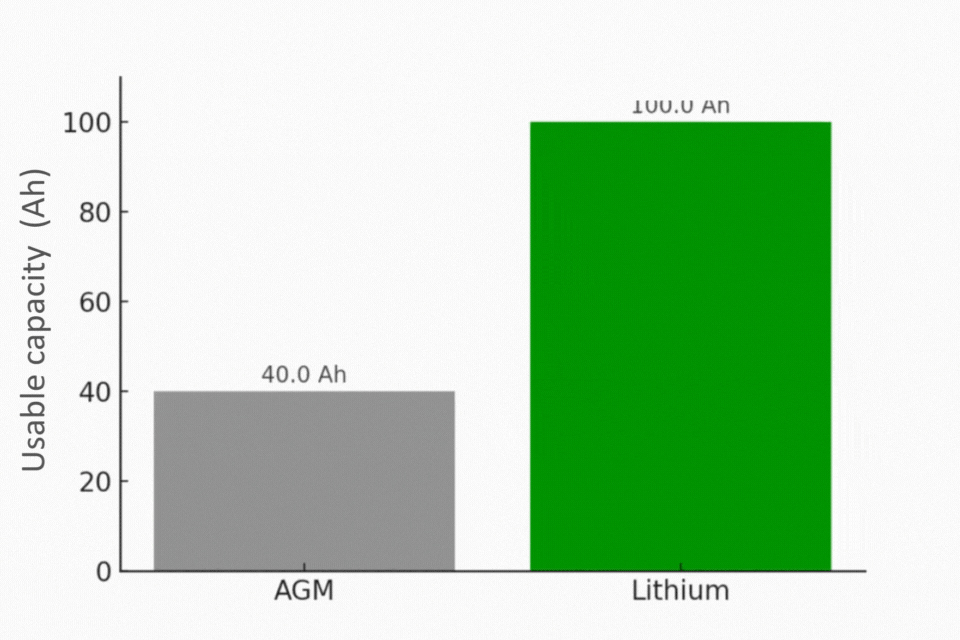
Key benefits of lithium camper batteries:
- More usable power: Up to 90% capacity (vs. about 50% for AGM).
- Longer lifespan: 3,000–6,000 charge cycles.
- Faster charging: More efficient energy absorption.
- Lighter weight: Perfect for van conversions where every kilo counts.
- Stable voltage: Even when powering inverters, coffee machines, or hairdryers.
Explore all complete lithium power solutions and off-grid packages at CarElectric or our other certified dealers in your area.
Retrofitting Lithium inYour Camper – Step-by-Step Guide
Switching to lithium isn’t just about replacing your old battery; it’s about making sure your entire electrical setup works together efficiently and safely. Here’s how to do it right.
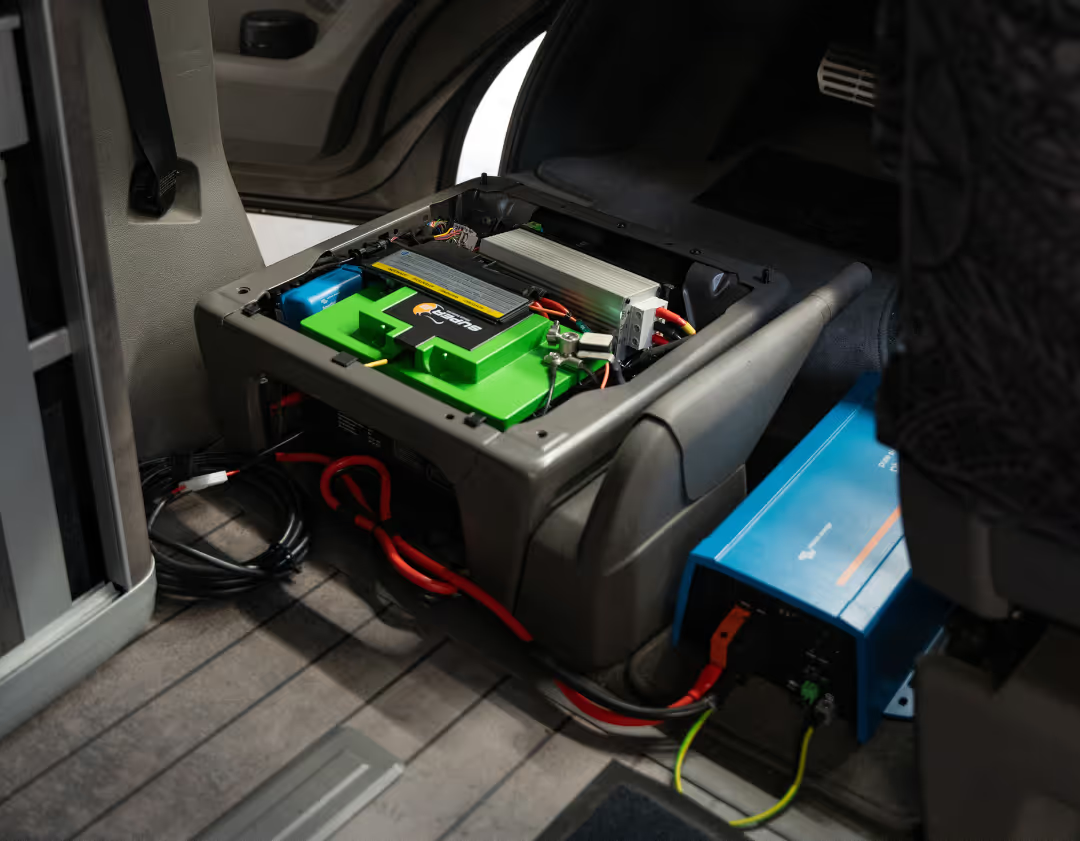
1. Choose the Right Battery Capacity
Your battery size should match your travel habits and energy consumption. Start by estimating your daily power usage in amp-hours (Ah) or watt-hours (Wh).
Ask yourself:
- How long do I want to stay off-grid?
- Which devices do I use daily?
For most campers, 100 Ah to 150Ah is enough for moderate use; see our Epsilon batteries that fall in this category. Full-time travelers or those running high-demand devices should consider 200 Ah or more; see our Nomia batteries for higher energy demand. Choosing the right battery capacity ensures you have enough power without overpaying or overloading your system.
2. Check Your Chargers and Power Sources
Before installation, confirm that all your charging equipment supports lithium chemistry. Lithium batteries require specific charging voltages and profiles for safety and efficiency.
Check that your components are lithium-compatible:
- Mains charger: Must support lithium charging profiles.
- Charge converters (booster): Essential for alternator charging.
- Solar charge controller: Should include a lithium setting.
Pro Tip: CarElectric’s charger converters and solar regulators are fully optimized for LiFePO₄ systems. Or find your Super B dealer near you, they also have everything you’ll need for a professional setup.
3. Update Battery Management System (BMS) Software
.avif)
A Battery Management System (BMS) is the built-in safety brain of your lithium battery. It monitors voltage, temperature, and current to protect against:
- Overcharging.
- Deep discharging.
- Overcurrent.
All Super B lithium batteries come with an internal BMS. You can even pair it with the Be in Charge app to track performance, charge status, and health (cycle count) directly from your phone. Keeping your app and firmware updated ensures top performance and longevity
4. Check Cables, Fuses & Electrical Protection
Because lithium batteries can deliver higher current than AGM, your wiring and protection need to handle the load.
- Verify cable cross-sections
- Use appropriate fuse sizes
For an all-in-one solution, the complete basic set from CarElectric includes:
- Lithium battery
- Charging booster
- Fuse distribution system with fuses
- Wiring and 12 volt power sockets for consumer devices (appliances)
You can get this set in two capacities, 100Ah and 150Ah total capacity, simplifying installation and boosting safety.
5. Consider Temperature & Installation Location
.avif)
Lithium batteries are sensitive to temperature. Choose the right heating mode based on your situation. Our Epsilon 100Ah and 150Ah have a selection of heating methods that can be enabled or disabled:
1. Heat up before charging (default): This is the default setting, where the app will pre-heat the battery to an optimal temperature before beginning the charging process. Batteries, especially lithium-based ones, perform better and last longer when charged at a specific temperature range, typically between 10°C and 30°C (50°F to 86°F). This mode ensures that the battery is warmed up to the ideal temperature before charging, which can prevent any potential damage from charging in too cold of a state.
2. Keep at charge temperature by external source: This mode keeps the battery at the required charging temperature at all times by using an external energy source. Managing temperature with external devices can be tricky, and if it’s not controlled properly, it could lead to thermal stress or other damage to the battery. In most campers and vans, you won’t need this setting either way.
3. Keep at charge temperature source independent: In this mode, the battery itself maintains the required temperature at all times without the need for an external heating source. This is achieved through the battery’s internal heating system built in, to actively regulate the temperature within safe limits. This is typically the safest and most efficient way to maintain a stable temperature for charging.
4. No heating: As the name suggests, this mode disables any form of heating. The battery will charge without any pre-heating or temperature control, so if the battery is too cold, it may not charge at optimal efficiency, or there might be risks of battery damage or reduced lifespan due to charging outside of the ideal temperature range.
Only one of them can be enabled and which method to use can be selected using the Be In Charge App or Be In Charge Software. In the image you can clearly see where the heating modes can be found.
Install your battery in a dry, well-ventilated area protected from extreme heat, vibration, and moisture. Proper mounting helps extend lifespan and ensures stable operation even on rough roads.
6. Get a Professional Installation
While experienced DIYers can install lithium systems, a professional setup is always safer, especially for complex or high-power configurations. Certified installers ensure:
- Vibration-resistant mounting.
- Safe, compliant wiring.
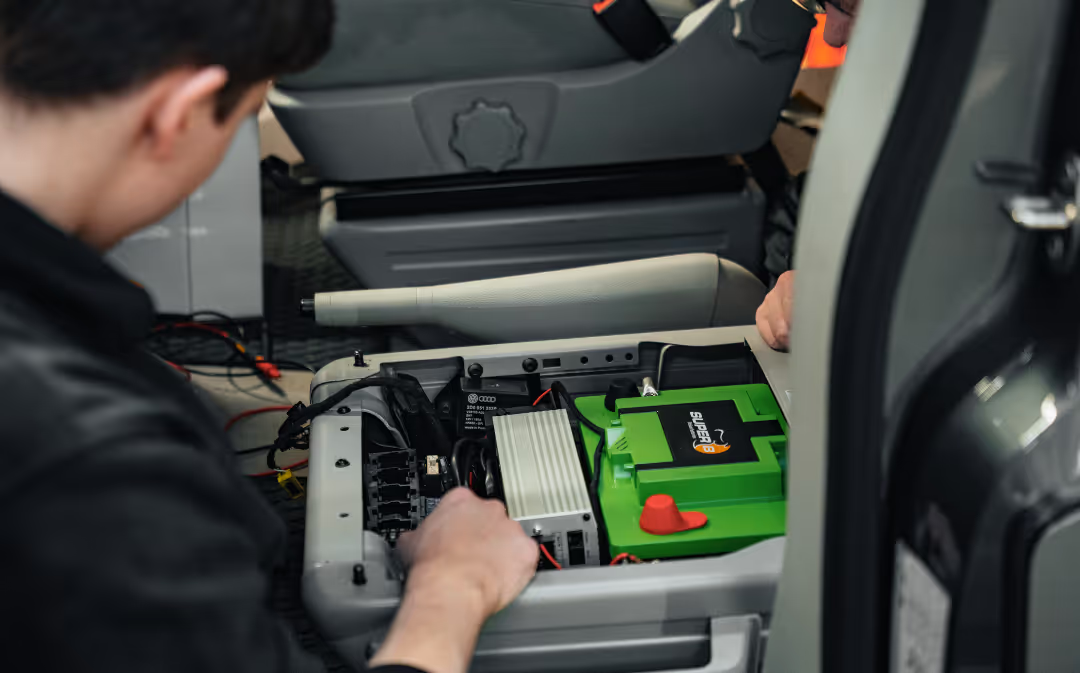
Have your lithium battery system professionally installed by our certified dealers in your area. This guarantees your system runs efficiently and safely for years.
FAQ – Lithium Battery Conversion for Campers
1. Can I replace my AGM battery with a lithium one?
Not directly. Chargers, DC-DC boosters, and solar controllers must be lithium-compatible.
2. Does lithium really give me more power?
Yes! You can use up to 90% of the battery capacity, compared to about 50% with AGM.
3. Do I need to modify my alternator?
No, but your DC-DC charger (booster) should match your alternator’s output.
4. Does lithium work in cold weather?
Partially. Super B batteries have integrated heating modes that you can select from the advanced settings in the mobile Be in Charge App or computer software. Read more about the specific heating modes under “4. Consider Temperature & Installation Location
5. How much does a lithium upgrade cost?
It costs more than AGM but pays off long-term thanks to longer lifespan, higher capacity, and lighter weight.
6. Can I install it myself?
Yes, if you’re experienced with 12V systems. Otherwise, choose a professional installation for safety and reliability.
Conclusion: Is a Lithium Battery Worth It for Campervans?
Absolutely. Upgrading to a lithium camper battery makes your van lighter, more efficient, and far more independent. It requires the right setup and know-how, but the result is true off-grid freedom.
With Super Bs’ high-quality LiFePO₄ batteries, all-in-one systems, and expert installation service from our dealers, you get everything you need for a reliable camper electrical system all from one source.
more blogs
There's much more to discover.

